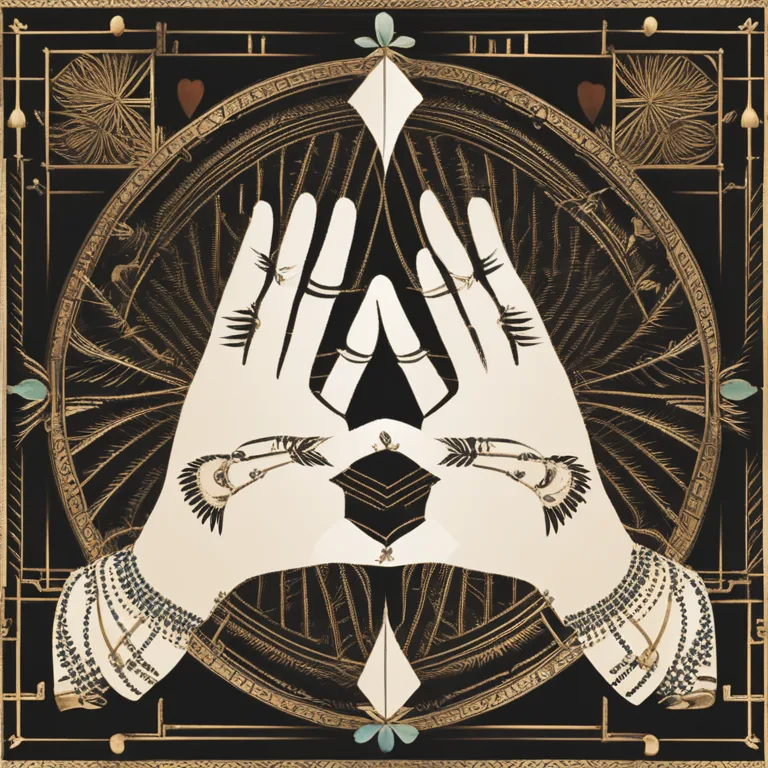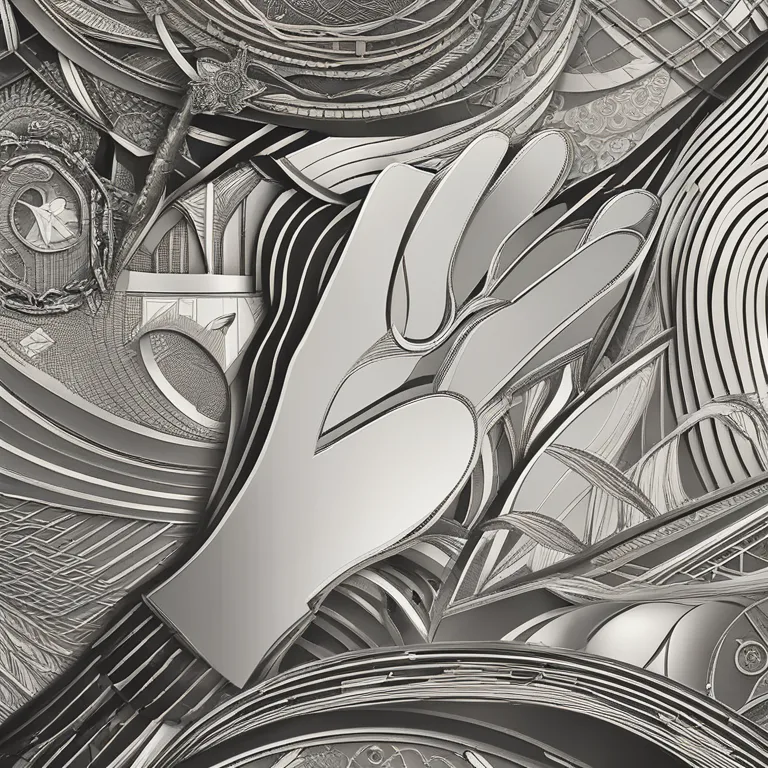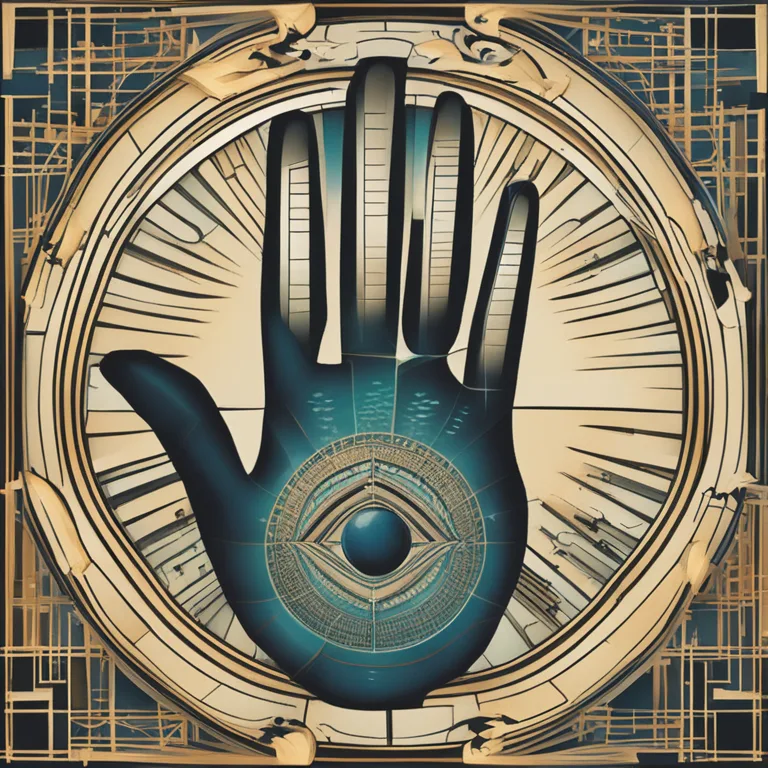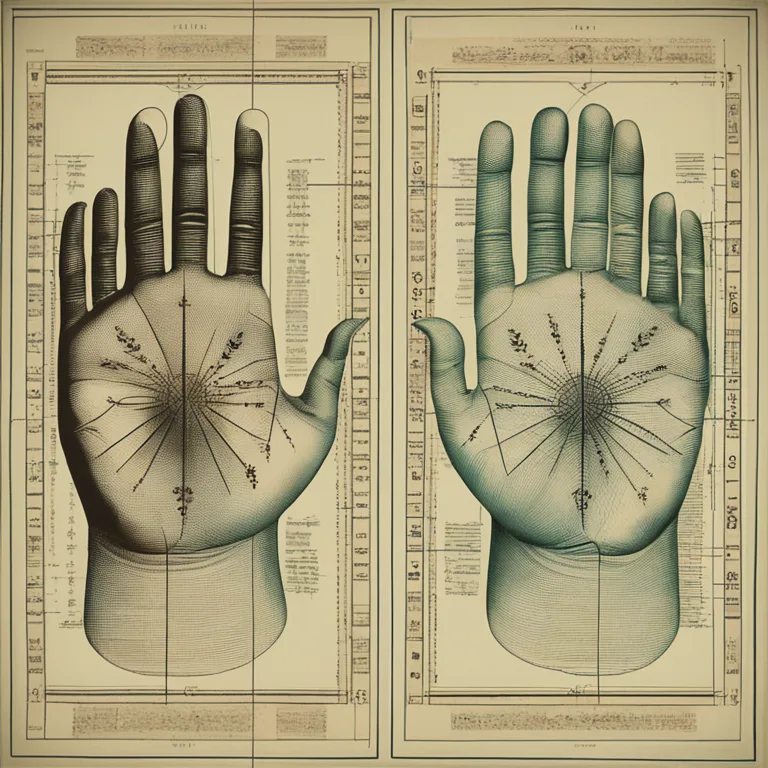
The Palmistry Guide: Differences Between Left & Right Hands
Delve into the intricacies of palmistry as we examine the unique messages your left and right hands may reveal about your life's journey.
article by Nora Pennington
Duality in Palmistry: The Two Hands
In the world of palmistry, each hand carries its own significance, unveiling various facets of an individual’s life. Traditionally, the left hand is associated with potential and personal traits—often referred to as the hand we are born with—while the right hand represents the accomplishments and the path one takes, known as the hand we have made. This fundamental distinction sets the foundation for interpreting lines and mounts on our palms, providing insight into our personality and destiny. As we delve into the mystic art of palmistry, it's important to bear in mind that this practice has evolved over time, with modern palmists considering both hands for a holistic understanding of an individual’s experiences and traits.

Reading the Dominant Hand
For most people, the dominant hand—usually the one used for writing—reveals how we have shaped our lives through actions and decisions. It is seen as the dynamic blueprint of what we have achieved and are striving for. The lines found here may change over time, reflecting personal growth and major life events. The dominant hand is influential in palm readings as it displays the choices we've made and the energy we've invested in cultivating our personal and professional lives. In 2024, while traditional practices still hold weight, contemporary interpretations emphasize the importance of recognizing the dominant hand as a mirror of our present state and conscious efforts.

The Non-Dominant Hand's Tale
Conversely, the non-dominant hand, often less changed by life’s experiences, is thought to symbolize inherited characteristics and subconscious inclinations. It's a map of our internal flawlines—where they begin and how they shape us intrinsically. Practitioners of modern palmistry believe that by comparing the lines of both hands, one can discern how far an individual has traveled from their inherent nature. This hand might reflect our instincts, reflexes, and potential—the raw materials we were given at birth. In 2024, analysis of the non-dominant hand continues to serve as a baseline for growth and self-discovery in palmistry.

Significance of Line Variations
The lines of the palm bear distinct tales—the heart line speaks of love and relationships, the head line discusses intellect and wisdom, and the life line tells of vitality and life changes. When comparing these lines between the two hands, variations can indicate psychological shifts, health transformations, and emotional developments. For instance, a clear difference in the life line between hands might suggest significant lifestyle changes, while disparities in the heart line could signal shifts in relational dynamics. Palmists of this decade pay close attention to these variances, as they hold the keys to understanding one's evolutionary journey.

The Mounts and Their Meanings
Besides the lines, the mounts of the palm (fleshy pads under each finger) signify different aspects of the personality, such as creativity, ambition, or passion. A pronounced mount of Apollo on the dominant hand, for instance, can indicate a flourishing creative endeavor, while a pronounced mount on the non-dominant hand might hint at inherent artistic ability. The contemporary practice of palmistry involves a nuanced investigation of these mounts in relation to both hands, allowing a palmist to provide insights on latent talents and realized skills.
Interpreting the Shapes
The overall shape of the hand, along with finger length and hand texture, is also integral to understanding the nuances between hands. For example, square palms with short fingers may suggest practicality, while long fingers and a slender palm can imply sensitivity. The differences in hand shapes, when comparing the left to the right, help reveal shifts in lifestyle preferences and adaptive traits over time, which are now recognized as key factors in defining our life's narrative.
Putting It All Together
In the continuous dialogue between free will and destiny, palmistry offers a unique lens through which we can view our lives. By understanding the microcosm represented in our hands, palmists can provide guidance personalized to the individual’s experiences and innate characteristics. As the practice evolves, the differences between the left and right hand become a profound tool, empowering people to navigate their lives with greater awareness and intentionality, anchoring palmistry as a relevant and dynamic discipline well into the 21st century.
Published: 1/3/2024
Modified: 1/3/2024
More predictions
Come back here soon to learn more about yourself and your future


Accuracy in Divination: Palmistry vs. Astrology
Explore the relative accuracy of palmistry and astrology in predicting the future and revealing personal traits in this insightful comparison article.


Palmistry Insights on Love: Counting Your Relationships
Discover what palmistry reveals about your romantic journey. This article shares insights on interpreting your palm lines for potential relationships.


Palmistry's Insight into Your Health
Discover the connections between the lines on your palm and your well-being in this comprehensive look at palmistry’s role in health forecasting.